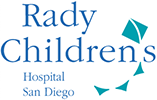Therapy for ADHD
What Is Therapy for ADHD?
Therapy is part of the treatment for most teens with ADHD. If you go to therapy, you will have meetings with a therapist to help with the problems that ADHD can cause.
In therapy, people learn skills like listening and paying attention better.
Some people with ADHD also get another type of therapy called occupational therapy. This helps when things like balance or handwriting are difficult because of ADHD or a learning disability.
Treatment for ADHD usually includes medicine. Medicines help people pay attention, use self-control, and fidget less. Medicine works best when people also have therapy.
Why Do People Need Therapy for ADHD?
Therapy helps teens with ADHD do better in school and at home. For example, people learn how to:
- focus on schoolwork
- listen and pay attention better
- get along better with others
- have fewer behavior problems
Some people need therapy to help ease difficult emotions caused by ADHD. For example, people might lose confidence or feel like they are disappointing others. Some teens become depressed, anxious, or frustrated.
When people learn skills to manage ADHD, they do better. Therapy also helps people feel happier and more confident.
How Does ADHD Therapy Work?
In ADHD therapy, people learn by doing. A therapist will share activities and ideas that focus on building the skills the person needs. Therapists can teach study skills, emotion skills, or attention skills, such as mindful breathing. They can teach social skills to help people get along better with others. They can teach skills to cope with anxiety. People practice the skills they learn.
In ADHD therapy, a positive relationship with the therapist helps a person feel encouraged and supported as they learn.
What Happens in ADHD Therapy?
At the beginning, your therapist will talk with you, ask questions, and listen to learn more about how ADHD affects you. Together you will make goals for what you want to improve.
In therapy sessions, you and your therapist might:
- Talk. Therapists encourage people to talk about their feelings. This helps people recognize feelings and express them in words instead of actions. Talking and listening helps people feel understood and more open to learning. It also helps people learn to pay attention and listen better.
- Do activities that teach lessons. Therapists might teach lessons about emotions, organizing schoolwork, studying, or understanding others. Activities and worksheets help make these lessons interesting.
- Practice new skills. A therapist might teach skills like mindfulness and breathing exercises. These skills can train attention and calm the mind and body. In therapy sessions, therapists have people practice skills they are learning.
- Solve problems. Therapists will ask about ADHD problems in school and at home. They will talk with you about how to solve these problems.
How Long Do People Do ADHD Therapy?
How long therapy lasts will depend on your goals. Most of the time, a therapist will want to meet with you once a week for a few months. After that, you can go back as needed.
How Can You Help Yourself?
Having ADHD isn't a person's fault. But there are things that you can learn in therapy to help things get better.
Here are some ways to build on the work you will do in therapy:
- Be ready to grow. Even with ADHD, you can improve your attention, emotions, and behaviors.
- Ask for help. Reach out to your parents, teachers, and friends for their help and support. Your therapist is there to support and help too.
- If you take medicine, take it at the recommended time and dose.
- Work on your strengths. Spend time noticing and doing things that you're good at. This helps you build confidence and self-esteem.
- Take care of your body. Exercise, eat healthy foods, and get enough sleep and relaxation. Practice breathing and mindfulness.

© 1995- The Nemours Foundation. KidsHealth® is a registered trademark of The Nemours Foundation. All rights reserved.
Images sourced by The Nemours Foundation and Getty Images.
